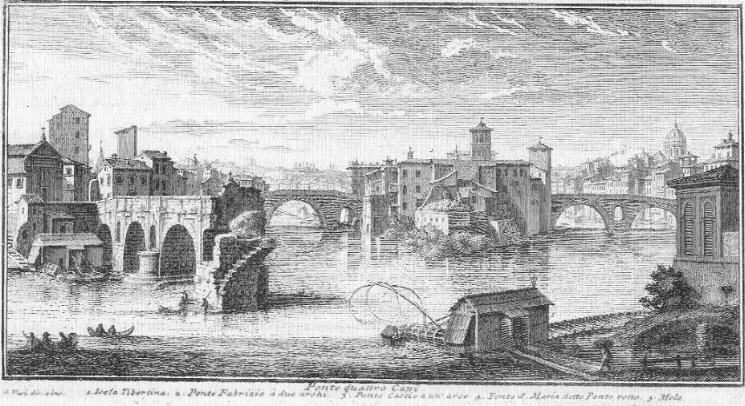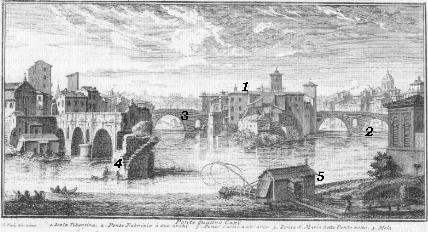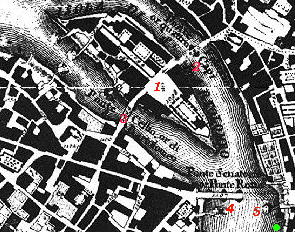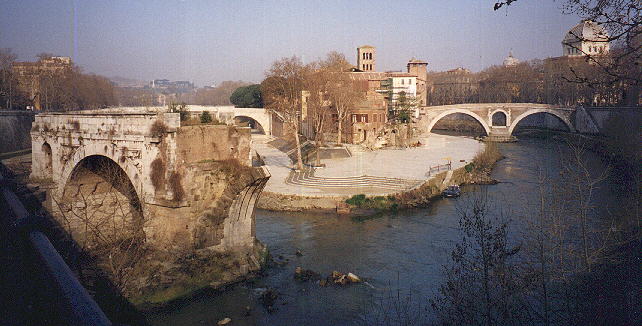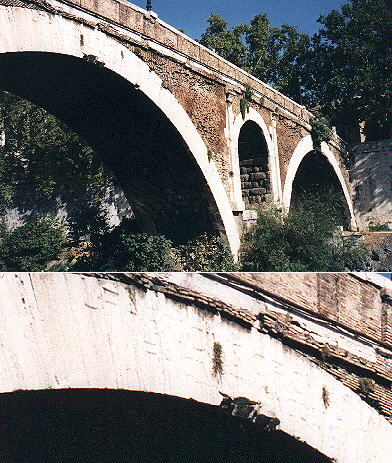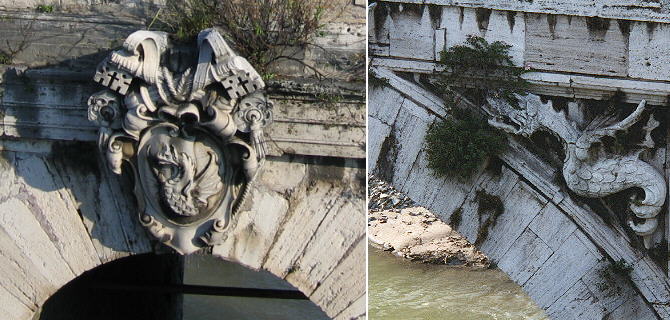  Ponte Quattro Capi (Book 5) (Map C3) (Day 5) (View C9) (Rione Ripa) In this page: The plate by Giuseppe Vasi Today's view Ponte Quattro Capi Ponte Rotto The Plate (No. 93)
In his walk along the river from north to south, Giuseppe Vasi looks back to represent the island in the Tiber and the three bridges which can be seen from this point. To the right of the island Ponte Quattro Capi or Ponte Fabritio built in the year 62 BC, to the left Ponte Cestio or S. Bartolomeo built under Augustus by the Consul Lucius Cestius and restored in the IVth century. At close sight what remains of the bridge built by Gregorius XIII in 1575. The view is taken from the green dot in the small 1748 map here below. In the description below the plate Vasi made reference to: 1) Isola Tiberina; 2) Ponte Fabrizio; 3) Ponte Cestio; 4) Ponte S. Maria (Ponte Rotto); 5) Mill. 3) is shown in more detail in another page.
The view is pretty much the same. A new (ugly) bridge built immediately downstream of Ponte Rotto allows a point of view very close to Vasi's one. The Old Bridge
Ponte Quattro Capi has retained its original looks (unlike Ponte Cestio) and can be best seen by going down to the river level.
In Roman times another bridge crossed the river at this point (Pons Aemilius), but this location was unfavourable
because the bridge could not resist the forces of the stream. Rebuilt by Julius III in the mid XVIth century, it was again
ruined. Gregorius XIII in 1575 built it again, but in 1598 a flood (the worst flood Rome ever had)
destroyed two arches. So now the symbols of the Pope, instead of a triumph, celebrate a failure.
Next plate in Book 5: Anticaglie presso il Ponte Palatino Next step in Day 5 itinerary: Chiesa di S. Giovanni Calibita e Spedale de' Benfratelli Next step in your tour of Rione Ripa: Chiesa di S. Bartolomeo all'Isola  or to Book 5 or to
The Coats of Arms of the Popes or
to My Home Page on Baroque Rome or to
My Home Page on Rome in the footsteps of an XVIIIth century traveller or to Book 5 or to
The Coats of Arms of the Popes or
to My Home Page on Baroque Rome or to
My Home Page on Rome in the footsteps of an XVIIIth century traveller
|
All images © 1999 - 2003 by Roberto Piperno. Write to romapip@quipo.it
